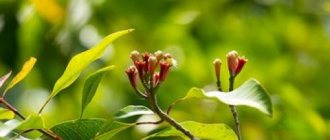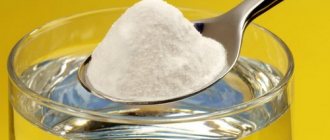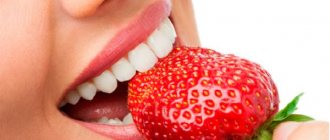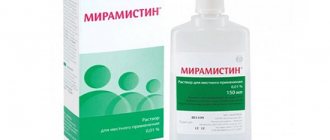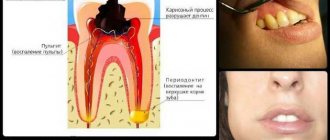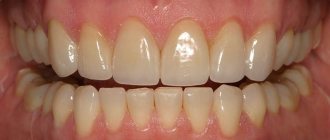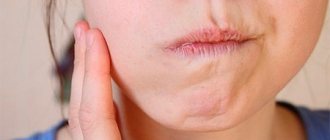Beneficial and healing properties of the bark
Since ancient times, oak has been associated with strength and strength. It finds application not only in construction and furniture design. Leaves, acorns and tree bark are used to treat many diseases. Useful properties used in treatment:
- varicose veins;
- gastric disorders;
- dental diseases;
- skin diseases.
The bark is rich in microelements (including calcium, important for teeth and gums), bioflavonoids, tannins and resins. Therefore, in dentistry, the product serves as:
- Anti-inflammatory agent. Almost 92% of dental problems are various inflammations, which either lead to serious oral diseases or are simply a complication of other diseases. Relieves all gum inflammation.
- Antiseptic. Targeted against viruses and fungi. This has been confirmed by modern scientific research.
- Hemostatic, healing - due to the action of tannins that affect blood clotting and skin regeneration. Wounds and cracks heal quickly.
- Rinse for swelling. Oak bark can “soothe” swollen mucous membranes of the gums.
- Anesthetic. To relieve pain.
Indications and contraindications for use
Oak bark can be considered a universal medicine of traditional medicine. It effectively copes with problems and has almost no contraindications; even pregnant women can use it after consultation with their doctor.
Products based on oak bark will help with the following diseases:
- stomatitis (in any form and at any stage of the disease);
- periodontal disease (to strengthen gums, preventing tooth loss);
- regular bleeding gums;
- bad breath;
- inflammation of the soft tissues of the oral cavity;
- dental problems (relieves toothache).
Soft tissue inflammation
Toothache
Bleeding gums
Bad breath
Periodontal disease
Stomatitis
Rinsing with oak bark after tooth extraction will help relieve inflammation and prevent the wound from becoming infected. In addition, it stops bleeding, relieves pain and speeds up the healing process. But you cannot rinse your mouth during the day after removal! This can cause the blood clot to wash out of the wound and increase bleeding.
Anna Losyakova
Dentist-orthodontist
For problems with gums, the same decoction that is used to rinse your mouth will help. To prepare the appropriate solution, you need to buy dry bark at the pharmacy, which is additionally crushed for easy brewing. The mixture can be packaged in packs of 50 or 100 g.
The contraindications are as follows:
- It is necessary to consult a specialist if the child is under 2 years old (allergic reactions and related problems are possible);
- If you want to bathe a child with miliaria (skin rash due to sweat) in a bath with the addition of bark, you also need the approval of your pediatrician;
- A long course of rinsing your mouth with this solution (more than 2 weeks) can lead to a deterioration in your sense of smell.
- Overdose may lead to vomiting;
- Allergic manifestations are possible.
The video describes the indications and contraindications for using oak bark:
How to prepare an infusion
Oak infusion - exclusively for rinsing gums. Has a milder taste. There are several types of infusions, they are similar in the preparation of raw materials, it must first be crushed:
- Ordinary infusion. Here you need 4 tablespoons of bark and 200 ml of water. The dubovina is placed in a thermos and filled with boiling water.
- Infusion with the addition of chamomile. Oak bark - two and a half teaspoons, chamomile - one. Place in a thermos and pour 250 ml of boiling water.
- Infusion with sage. Three teaspoons of oak bark and one of sage. Place in a thermos and pour 250 ml of boiling water.
- All decoctions are infused for an average of 20 minutes, after which they need to be cleaned of impurities and then used for their intended purpose. You can leave it to brew overnight. The prepared mixture should be stored for 2 days.
- It will take a little more time to prepare the alcohol solution. They use bark from young oak trees. The resulting mixture is infused for 14 days in a dark place. Before rinsing, strain, dilute with warm water 1 to 1. If discomfort occurs, dilute the infusion.
What will we use?
First of all, we would like to warn you that treatment with traditional methods for bleeding gums should be carried out with caution.
First you need to find out the cause of your gum problem. If your gums are bleeding due to careless handling, you can try to cure bleeding gums at home. But if bleeding is caused by pathology, professional treatment cannot be avoided. In this case, self-medication is fraught with worsening of the condition. When your gums bleed, what can you do at home? There are many remedies against this problem. However, it is not necessary to visit a doctor.
Treatment
The use of oak bark to treat diseases of the oral cavity and gums is simple. You will need an oak tree, it can be bought at a pharmacy chain and has a fairly low cost. You can prepare the bark yourself at the end of spring.
Instructions for use
General instructions for use are simple:
- Rinse your mouth as often as necessary to relieve discomfort. For pain - every two hours, for prevention - three times a day.
- The gums are rinsed with the prepared product at room temperature (22–25 degrees).
- Prepared decoctions or infusions can be stored in the refrigerator for up to two days. In the room - no more than 18 hours.
- Rinse for an average of 3 minutes. If the aftertaste of the bark is unpleasant, then 15 minutes after the procedure, rinse your mouth with plain water. The course of treatment is no more than 10 days.
Treatment of periodontal disease
Periodontal disease is the subsidence of the soft tissues of the gums. Typically, the gums recede so that the ends of the tooth canals become bare. This causes pain and also results in the loss of teeth.
Gargling with a decoction without additives strengthens the gums. Can be used to prevent periodontal disease.
The treatment period is 7 days, up to five rinses are done per day. If the disease is advanced, the period increases to 14 days.
Use for bleeding gums
The appearance of bleeding is associated with delicate and weak gum tissues or due to heavy plaque on the enamel. Sometimes it happens as a sign of other diseases not related to the oral cavity. In this case, rinsing with oak infusion is more like a preventive measure.
Usually a simple decoction is used or mixed with chamomile. Additionally, it prevents infections from entering the blood. To relieve bleeding gums, use tooth powder with oak bark instead of rinsing.
Treatment of stomatitis
Stomatitis occurs due to a dirty object getting into the mouth, so children are more likely to get sick. The child’s wounds are treated with a cotton swab soaked in the broth. To treat stomatitis, a decoction of the bark with chamomile, calendula marigold or sage is used. In a concentration of 2:1. The dry crushed part is poured with boiling water and infused in a water bath for five minutes. Then cool and use as intended.
Treatment of gumboil and toothache
It is not always possible to get to a doctor on time, so if there is an urgent need, oak bark is brewed with sage to relieve inflammation of the periosteum and completely disappear the flux.
To relieve toothache, rinse your mouth with a simple decoction every 90-120 minutes.
There is a more complex recipe for teeth. You will need:
- 1 liter of water;
- 100 grams of bark;
- a third of a glass of 3% vinegar;
- 5 grams of red pepper.
Pour water over the main ingredient and boil for about 20 minutes. Add other ingredients to the purified solution. The mixture is stored in a cool place for a week.
Decoction for rinsing after tooth extraction
It is important that after tooth extraction, the wound heals quickly, without inflammation and without infection. Therefore, for additional disinfection, surgeons ask to rinse the gums with an oak decoction mixed with soda or chamomile decoction. You need to rinse after eating, every 180 minutes.
Toothpaste with oak bark
Crushed oak bark is mixed into toothpaste. The main purpose is to treat gingivitis, periodontitis or to strengthen teeth and gums. Instead of paste, tooth powder is made with oak bark and other medicinal plants. They need to be crushed, mixed and sieved to remove large particles. Clean carefully so as not to damage the gums and enamel.
How to brew oak bark for gums
To treat gums, a decoction or infusion of oak bark is prepared. Rinsing with oak bark decoction helps relieve inflammation and strengthen soft gum tissue. You can brew the bark along with other medicinal herbs.
Oak bark decoction for gums
To prepare the decoction you need to take:
2 tablespoons crushed oak bark
2 cups boiling water
Pour water over the bark into a saucepan and place in a water bath or low heat. Boil for 5-7 minutes at low boil. Remove from stove and cool.
Strain the finished broth and add to the original volume. Use as a mouth rinse for periodontal disease, gingivitis, stomatitis, and toothache.
Store in a closed glass jar in the refrigerator for no more than 2 days.
How many times to rinse your mouth depends on the specific disease. As a rule, 3 to 5 rinses are carried out during the day. It is recommended that after rinsing your gums with a decoction of oak bark, rinse your mouth with plain clean water. Please note that the decoction can stain your teeth. In addition, the decoction has a strong astringent effect and leaves a not very pleasant aftertaste.
Before rinsing, the broth stored in the refrigerator must be heated to a comfortable temperature.
The course of treatment also depends on the disease. It can last from 10 days or more depending on the result.
Oak bark infusion for gums
In addition to the decoction, you can prepare an infusion. It is less astringent, but no less effective. You can prepare it in a kettle or thermos. A thermos makes a stronger infusion.
To prepare the infusion, pour 2.5 teaspoons of crushed oak bark into 2 cups of boiling water (0.5 liters). Cover with a lid and wrap. Leave until the infusion has cooled completely. It's better to do this at night.
Strain the finished infusion and use for rinsing for stomatitis, gingivitis, and periodontal disease.
Often, dentists themselves prescribe oak bark for these diseases, as well as after tooth extraction, together with other herbs that have anti-inflammatory and antibacterial properties. Usually this is chamomile or sage.
Prepare a mixture by taking medicinal herbs in equal proportions, for example, 1 tablespoon of oak bark and 1 tablespoon of chamomile or sage. Take a tablespoon of the prepared herbal mixture and brew it with a glass of boiling water. Infuse and strain.
When preparing a decoction, first prepare a decoction of oak bark over low heat or a water bath and add a tablespoon of sage herb or chamomile to the hot decoction. Cover with a lid and a towel and let it brew. Then filter.
Oak bark structure
A tree-like plant, pedunculate oak is used not only as a building material. It is an excellent animal feed and a tannin in light industry. In the food industry, a coffee surrogate is made from it. Traditional medicine recipes suggest using it as an antiseptic and anti-inflammatory agent.
The bark contains tannins and organic acids. Contains flavone compounds, phlobafen. It contains pectin, sugar and pentosan. Oak acorn fruits are rich in starch, protein compounds, and vegetable oils.
Tannin compounds act on pathogenic organisms, disrupting their nutrition. Together with human proteins, they create a protective film. This protects tissues from harmful microflora and prevents irritation. In turn, flavonoids have an antioxidant effect.
Decongestant and antiallergic
These properties are also very relevant in the context of our conversation today, since gum diseases are often accompanied by swelling and are often provoked by allergies to external or internal irritants.
All this together provides the gums with a fairly stable level of protection from many potentially dangerous conditions. Thanks to this, oak can be used for medicinal and strengthening purposes.
But oak bark has a fairly wide range of applications, a rich composition, but the healing properties of oak bark manifest themselves not only for gum disease. This is indeed a worthy alternative to tablets, etc.
medicines.
